Elizabeth Spann Craig's Blog, page 120
May 9, 2015
Twitterific Writing Links
by Elizabeth S. Craig, @elizabethscraig

Twitterific writing links are fed into the Writer’s Knowledge Base search engine (developed by writer and software engineer Mike Fleming) which has over 30,000 free articles on writing related topics. It’s the search engine for writers.
How to Avoid Exposition in Dialogue: http://ow.ly/Mskbo by Melinda Brasher
How Crowdfunding Works: http://ow.ly/Msl8u by JH Mae @IndieReader
12 Things Every Writer Should Store in The Writing Vault http://ow.ly/MskRG @ediemelson
Extensive revision: http://ow.ly/Msl1J @holly_schindler
Women’s Fiction or Romance? The Differences, and 5 Reasons Why They Matter: http://ow.ly/Mslcj @lindagoodnight
Turn Your Ah Ha! Moments into Amazing Characters: http://ow.ly/MsktL @sharilopatin
Overwhelmed? 2 Ways to Take it Down a Notch: http://ow.ly/Mskqg @wherewriterswin
Age Group and Genre: Targeting Your Manuscript: http://ow.ly/MskVJ @JAZarins
4 Questions To Ask When Your Writing Is Stuck: http://ow.ly/Msk6L @cathyyardley
How to Improve Your Amazon Book Description & Metadata: http://ow.ly/Mslp6 @bookgal @Janefriedman
Dialogue Dos http://ow.ly/MuVuP @kfbaugh
How to Write in Deep POV: http://ow.ly/MuUeR @shesnovel
Controlling The Creatives: http://ow.ly/MuPiQ @kristinerusch
5 Essential Steps to Getting a Literary Agent: http://ow.ly/MuQek @phogenkampvt
First Pages that Shine: http://ow.ly/MuPdv @marygkeeley
Tips for Book Proposals: http://ow.ly/MuQrM @wendylawton
C is for Character Change: http://ow.ly/Mslef @HeatherJacksonW
Fighting Writer’s Block? A Strategy to Get Creativity Flowing: http://ow.ly/Msk8E @1KTrueFans
6 novelists who didn’t publish until their 40s or 50s: http://ow.ly/MpYI6 @OliviaGoldhill
Writing About Your Life: It Doesn’t Have To Be A Memoir: http://ow.ly/MpZ5t @kwicoff
How to be Decisive When Writing: http://ow.ly/MpZft @enderawiggin
Inspiration for Horror Writers: http://ow.ly/MpXvJ @write_tomorrow
Beware of committing these Twitter turnoffs: http://ow.ly/MpXMB @LaurelGarver
Story Goals: 4 Throughlines to Complete Stories: http://ow.ly/MpXIP @glencstrathy
7 Types Of Book Launch Events: http://ow.ly/MpXBc @trainingauthors
3 Things You Must Know About Double Negatives: http://ow.ly/MpYGm @Grammarly
Getting Book Reviews: 5 Myths: http://ow.ly/MpXGn @trainingauthors
3 Reasons to Write About the Worst Experience of Your Life: http://ow.ly/MpYBv @McgannKellie
May 2015 Author Earnings Report: http://ow.ly/MGPyj @HughHowey
How to Write a Nationally Bestselling Book: 10-Point Checklist: http://ow.ly/MpXA6 @SLNazario
Grateful to be an Independent Writer: http://ow.ly/MGFpN @mike54martin
5 Ways to Change the World with Your Writing: http://ow.ly/Mnhmv @meghantschanz
3 Essential Tips To Make Your Anti-Hero Effective: http://ow.ly/Mozfy from Dean Elphick
How long should a fantasy novel be? http://ow.ly/MozRJ @PhilAthans
Prose is Architecture, How to Write Vivid Character Descriptions: http://ow.ly/MpaAg @angelaackerman
Writing Income Timeline: The Long Game: http://ow.ly/MpapQ @KameronHurley
Do Your Readers Know You or Your Book Exist? http://ow.ly/MpaoT @KathleenGage
Is your book idea good? http://ow.ly/Mozd1 @berkun
Persnickety Pronouns: http://ow.ly/MnhpR by Melissa Gilbert
50 Things to Tweet About: http://ow.ly/Mnhxp @bookgal
Horror with Humor: http://ow.ly/Mozzz @megmcardle
Variety In Sci-Fi Romance: http://ow.ly/MnhSL @thgalaxyexpress
What Book Clubs Are Teaching 1 Writer About Writing: http://ow.ly/MnhtP @AmyImpellizzeri
Why Don’t We Read More? Are Books Still Our Best Bet? http://ow.ly/MCEdU @Porter_Anderson @baldurbjarnason
Why you should put your book on Wattpad ASAP: http://ow.ly/Mk5Zc @kseniaanske
Building Believable Characters http://ow.ly/Mkb0F @LinoreRose
A Writer Speaks Directly To Publishers: You’re Giving Amazon Another Advantage”: http://ow.ly/MCE2U @Porter_Anderson @kathrinpassig”
Science Fiction Writing Tips: How to Make a Vampire Not Suck: http://ow.ly/Mkb4O @PhilAthans
13 ways of thinking about the poetic line: http://ow.ly/Mk5NR by Dana Gioia
The Freelance Scramble: The Unthinkable: http://ow.ly/Mk5UC @kristinerusch
Generic Description: http://ow.ly/MkaP7 @kid_lit
How to Respond to Criticism of Your Poetry: http://ow.ly/Mk5Cj @winningwriters
The secret to writing a novel a month: http://ow.ly/MkaUk @ShantnuTiwari
4 Surprising Benefits to Letting Your Characters Take the Reins: http://ow.ly/Mk6Xf @AndreaLochen
Scared Senseless: The Indie Horror Boom and What Frightens Us Now: http://ow.ly/Mk79t @MarkHarrisNYC
Writing a Personal Essay: 8 Common Mistakes to Avoid: http://ow.ly/Mk7d4 @amypaturel
Crime stories in which the author addresses the reader directly: http://ow.ly/MCDrx @mkinberg
On Writing Economically: A Challenge: http://ow.ly/Mk74N from Lost in the Subway
Story Elements checklist: http://ow.ly/MgYjA @AlexSokoloff
How to Promote Your Book like a Boss on Facebook: http://ow.ly/MgYZp @JBennett111
Wattpad Partners with SoundCloud to Add Soundtracks to eBooks: http://ow.ly/MgYG3 @InkBitsPixels @thDigitalReader
Sharing Your Stories: Beyond the Book: http://ow.ly/MgYSf @Janefriedman
4 Ways To Create An Authentic Social Media Presence: http://ow.ly/MgYe4 @DonnaRadley
Audiobook Samples Now Available on Goodreads: http://ow.ly/MgYzx @InkBitsPixels @thDigitalReader
On Changing Book Titles And Covers: http://ow.ly/MgY4R @thecreativepenn
Killing your darlings is a mark of writing maturity: http://ow.ly/MgY7j @Roz_Morris
Representing Indie Authors at the 2015 London Book Fair: http://ow.ly/MgZ7A @creativindie
How To Record Your Own Audiobooks For ACX: http://ow.ly/MgYKO @thecreativepenn
The Definitive Guide to Pricing Your Book: http://ow.ly/MgYO4 @Wiseink
Amazon Pays 450,000 A Year To This Self-Published Writer: http://ow.ly/Mh8iQ @ForbesTech @passivevoiceblg @pbackwriter
How One Author Earns $450,000 a Year Self-Publishing on Amazon: http://ow.ly/Mdyf4 @alexisgrant
Tips on Writing Suspense Stories for Children: http://ow.ly/Mdwzb by Linda Wilson
Revolver v. Pistol: Do You Know The Difference? http://ow.ly/MdxQO @LeeLofland
The Power of Pre-Orders: http://ow.ly/MdyM2 @ryancaseybooks
The 12 Plot Ideas Every Classic TV Show Did To Death: http://ow.ly/MdwF9 @dcbiller
Spellbind Your Readers With Realistic Magic: http://ow.ly/MdypH @TalValante
Weighing Writing Advice: http://ow.ly/MdwpA @noveleditor
Don’t Quit Your Day Job: http://ow.ly/Mdyhg @menwithpens
Why 1 writer is serializing fiction on her blog: http://ow.ly/MutpN @joannaslan
Pet Peeves in SF: http://ow.ly/MdwPo by Robert Holbach for @UKTor
51 Websites for Romance Writers: http://ow.ly/Mu0u9 @nownovel
Author Self-Promo That Actually Works: http://ow.ly/MdyBH @DelilahSDawson
5 Things to Know Before Getting an Agent (video): http://ow.ly/MdwlJ @ava_jae
4 Tips for Serious Writers: http://ow.ly/Mdx11 @Jenslattery
37 Ways To Write About Anger: http://ow.ly/M7W4J @writers_write
Marketing 101: Creating a Strategy: http://ow.ly/M7UAh @JenniferAFusco
Evaluating your computer backup strategy: http://ow.ly/M7VEv @JeriDansky
The Epic Guide to Setting Your Story (with a free questionnaire): http://ow.ly/M7UyJ @ShesNovel
Giving a Protagonist a Hidden Motivation: http://ow.ly/M7VYJ @RogerDColby
Narrative voice encompasses tone, diction, POV, tense, & style: http://ow.ly/M7W2o @EditorJamieC
Top writing links for the week at Twitterific:
Click To Tweet
The post Twitterific Writing Links appeared first on Elizabeth Spann Craig.
May 7, 2015
Still Grateful to be an Independent Writer
by Mike Martin, @mike54martin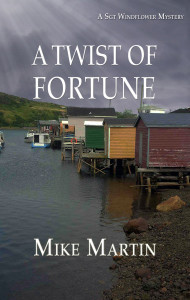
I have often seen articles that talk about the best and the worst aspects of being an independent writer. Usually their central theme is that we should stop whining and be grateful that we are allowed to write at all. And I usually end up agreeing with them. That doesn’t mean that I am going to stop complaining about having to do everything myself. Insert Big Sigh here. But it does remind me that I have been given a great gift and that there is a universal truth that says whatever we are grateful for we get to keep. Therefore I am grateful to be an independent writer.
I’m grateful to be a writer at all. I was grateful when I was a freelance writer and getting paid much less than less than five cents a word to produce keywords and SEO content. I was grateful when I was a ghostwriter and speechwriter and it meant that I would write and someone else would literally get the credit. I was grateful when I sold my very first piece for $25 and decided to quit my job so that I could focus on my writing. I wasn’t grateful to be very broke and very much in debt for the next three years, but now I’m grateful to have survived that experience.
I’m grateful for all the people who have helped me along the way. Teachers who thought enough of my writing to decorate it in red ink. My partner who decided to stay with me and support me during the lean years and continues to support me and stay with me during the on-going lean years. My family members who have had to read through reams of illegible poetry as I found myself and then to buy my books and show up at events so that I had someone to talk to besides the bookstore manager.
I’m grateful for the many kind readers of my earlier work who gently pointed out that they contained ‘a few minor grammar and spelling mistakes’. I’m even more grateful for the people who saw the mistakes and pretended they weren’t there. If prodded they would admit they had seen them, but that they would add that that really didn’t take away from the story. Come to think of it I’m grateful that anybody has read my books, because that is what actually allows me to call myself a writer.
I’m grateful for editors with sharp pens and steely sharp tongues who didn’t mince words but told me the truth. Mostly, that my stuff wasn’t good enough or ready enough for publication. That I had a lot more work to do, which I didn’t know at the time, but I do now, and for which I’m grateful. I’m also grateful to the few brave souls who saw enough in me and my writing, to encourage me to keep going, even with a few extra words tacked onto a ‘that piece doesn’t work for us’ letter that I used to paper my writing room’s walls.
I’m grateful for book reviews and book reviewers. Independent writers like me live and die on your every starry pronouncement. Three stars means we can survive, four stars means we can grow, and those elusive tender little five stars that you guard so preciously, they are the path to freedom, the way to greater writing glory. Much to my surprise I am particularly grateful to one reviewer who trashed my first book, The Walker on the Cape. He didn’t have the usual complaints about weak writing, poor editing or atrocious grammar; all of which would have been true. He thought that I didn’t do enough to fully fill out the plot or enhance the character development. He thought I could do better than that.
At first I was shocked that someone could so publicly and viciously attack my baby. But after a while I realized the gift that he had given me. I was, and am, grateful for the fact that he imagined me as a writer, a real writer, with the potential to create and hone a good book. Yes, I had to do a lot more work and listen to a lot more people, but three books later I am still trying to live up to that ‘bad’ reviewer’s image of me, as a real writer. It is a goal I have now with all of my work, published or not. To make it better than before and to keep aiming to get better.
So, despite all of the marketing and distribution and social networking and editing and re-editing and then trying to get people to first look and then buy my books, I am still grateful to be an independent writer. Because that means I get to write and revel in the possibility of other people reading my books. That’s all any writer has a right to ask for. I have published books and they appear in bookstores and on people’s bookshelves, and in some places you can even get one with your library card. To me that is amazing. And worth every ounce of energy and every drop of sweat and every long night with my shoulders aching and my eyes red and blinking.
I am still grateful to be an independent writer.
Mike Martin is the author of the Sgt. Windflower Mystery series which is set in small communities on the eastern coast of Canada. His latest book, A Twist of Fortune is available here:
Find Mike on Facebook.
Why one writer is happy to be indie (by @mike54martin ):
Click To Tweet
The post Still Grateful to be an Independent Writer appeared first on Elizabeth Spann Craig.
May 3, 2015
Why I’m Serializing Fiction on My Blog
By Joanna Campbell Slan, @joannaslan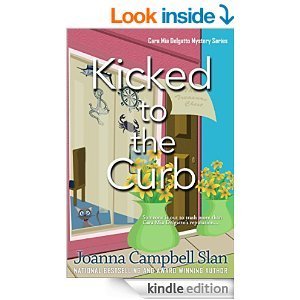
Building Blog Traffic
Reviewing all the blog posts I’ve done over the years, the one that garnered the most attention was a serialized short story I’d done with my sister bloggers at Killer Hobbies. That got me thinking. What if I wrote a short story by myself and offered it in serialized installments?
Other Goals
Better yet, what if I wrote the story in real time? The idea held a lot of appeal. A serialized story would engage more readers and get them to sign up as blog followers. They might even want to tell their friends about my work and suggest that they check it out. Best of all, eventually I would have a new product that I could bundle and repackage for sale.
Results—Expected
So I decided to give it a try. Over the past month and a half, I’ve serialized two long short stories and I’m embarking on my third. As predicted, reader involvement with my blog has improved immensely. Now I’ve added two new short stories to my body of works.
Results—Unexpected
While it’s certainly daunting, this daily exercise has been a boon to my creativity. Knowing that I need to write a post each day, following up what I wrote the day before, and moving ahead with the plot, is a bit nerve-wracking. That said, I’m loving it! They say it takes twenty-one days to form a new habit, so I’m not quite at the “new habit stage,” but I’m definitely on my way.
I find the nearly instant feedback from my readers to be an incredible energy boost. So much of writing is solitary, and this sort of immediate response is incredibly affirming. Readers have told me that they open their computers each morning eager to start their day with a new post! Now if that doesn’t keep an author at her keyboard, I don’t know what would.
How It Works
The work is done in real time or nearly so. (Sometimes I write the post the night before, sometimes I write it the same morning it goes live.) So I’m creating the stories as I go along. Each day I remind readers how to read the previous installment. I also publicize the offering through my newsletter and on my Facebook page. Because the blog posts can’t be too long, I find myself thinking in terms of shorter, denser pieces with cliffhanger endings. I have a hunch that will improve my writing.The stories are left up for one week after I finish, and then we take them down. That helps drive readers to my blog in a timely manner.
Have a Look
Want to see what I’m doing? Here’s the link: http://joannaslan.blogspot.com/2015/04/cara-mia-delgatto-and-bye-bye-birdie.html
Let’s Chat
I’m curious… Have you ever written a serialized short story or novel? As a reader, would you enjoy following along with a serialization? As an author, would you be game to try it?
National bestselling and award-winning author Joanna Campbell Slan has written twenty-eight books, both fiction and non-fiction. Visit her at www.JoannaSlan.com or follow her on Facebook at http://www.FB.com/JoannaCampbellSlan The most recent book in her new Cara Mia Delgatto Mystery Series is Kicked to the Curb (4.9 stars out of 5 on Amazon). Get it here.
Why 1 writer is serializing fiction on her blog (by @joannaslan):
Click To Tweet
The post Why I’m Serializing Fiction on My Blog appeared first on Elizabeth Spann Craig.
May 2, 2015
Twitterific Writing Links
by Elizabeth S. Craig, @elizabethscraig

Twitterific writing links are fed into the Writer’s Knowledge Base search engine (developed by writer and software engineer Mike Fleming) which has over 30,000 free articles on writing related topics. It’s the search engine for writers.
Writing a Book People Can’t Put Down: The Art of Pacing: http://ow.ly/M6VIg @mara_fortune
5 tips for conducting an interview with someone you care about: http://ow.ly/M6WF6 @daveisay @TED @awesomechoi
The Truth About Memoirs: Is Yours A Brave Confession Or A Book Of Lies? http://ow.ly/M6ZjM @AnthonyEhlers
Get your yoga on as a writer: http://ow.ly/M6Zug by Meredith Quinn
4 ways to remove padding words: http://ow.ly/M6ZHq @MiaJouBotha
4 Ways to Revitalize the Author Reading: http://ow.ly/M70dq @meghancward @laurajoycedavis
Advice for Struggling Writers: http://ow.ly/M70WQ r @eadjennymartin
We Are What We Write? http://ow.ly/M7UtH @ThereseFowler
It’s easy to write a picture book. It’s much harder to write a picture book that will sell. http://ow.ly/M7Uw4 @inkyelbows
Author Business Cards: http://ow.ly/MpbpZ @ClayStafford @KillerNashville
3 Options for Sharing Kindle Notes and Highlights: http://ow.ly/M7UEd @CKmacleodwriter
Subtext Speaks: How to Write Effective Movie Script Dialogue: http://ow.ly/M7VNA @TalkTheTalk10
Writing a 3-Line Poem Daily for a Year: http://ow.ly/M7W6J @YvonneWhitelaw @chrisguillebeau
Aftermath of a Kindle Daily Deal: http://ow.ly/M7UFV @jimchines
Desires, Drives, Obstacles, and Conflicts: http://ow.ly/Mpbea @JadenTerrell @KillerNashville
Author Entrepreneur: Increase Your Revenue: http://ow.ly/M6Vpw @thecreativepenn
It’s About Conflict: http://ow.ly/M6Vfj @authorterryo
A writer tries to be more fit: http://ow.ly/M6UXY @FinishedPages
8 Ways to Take Control of Social Media: http://ow.ly/M6Uu4 @timgrahl
In Defense of Short Fiction: http://ow.ly/M717k @keithr34
Crime Writers: Determining Time of Death: http://ow.ly/MpaWz @DPLyleMD @KillerNashville
22 questions for poets: http://ow.ly/M6lxI @HungerMtn by Bruce Smith
What Should You Charge for an Indie eBook? http://ow.ly/M6lm9 @selfpubreview
3 Ways Writers Get Overwhelmed — And What To Do About It: http://ow.ly/M6lvy @brooke_warner
Interview with Agent Jeff Kleinman: Query Letter Critiques (podcast) http://ow.ly/M6lsz @DIYMFA
15 Important Questions Before Writing: http://ow.ly/M6lwE @111publishing
4 Tips to Quickly Improve Our Writing: http://ow.ly/M6lnU @merylkevans @Grammarly
Write a Short Story Every Day In May: http://ow.ly/Moz0p @StoryADayMay
28 Beautiful Words The English Language Should Steal: http://ow.ly/M6lAG @wordsbydan
How To Self-Publish A Poetry Book: http://ow.ly/M6lPy @OrnaRoss
#FutureChat: The need for authors to be available and approachable: 4:30pBST/ 11:30aET (now) http://ow.ly/Mn5BS @Porter_Anderson
Picture Book Apps and the Case of the Vanishing Author: http://ow.ly/M6lDv by Sandy McDowell @DigiBookWorld
9 Universal Story Hooks: http://ow.ly/MnhCh @Mary Buckham @jamigold
Top 10 treasure hunts in fiction: http://ow.ly/M6lro by Jane Alexander @guardianbooks
Why Do We Need Diverse Books in Non-Diverse Schools? http://ow.ly/M6lOs @LEEandLOW
Eliminate Clichés and Trim Overwriting: http://ow.ly/M5K1Q @Janice_Hardy
Publishing’s old and new models: http://ow.ly/Mn4i4 @Porter_Anderson @TheFutureBook
Publishers’ Forum in Berlin: ‘Reconstructing Publishing': http://ow.ly/Mk67h @Porter_Anderson @PublishersForum
How to run Successful Giveaways: http://ow.ly/M5KpI @BenGalley @IndieAuthorALLI
7 Ways You’re Giving Away Your Power as a Writer: http://ow.ly/M5K57 @rachellegardner
10 Questions to Ask Before You Decide to Become a Writer http://ow.ly/M5KBy @DiAnnMills @ediemelson
Not Writing When You Need to Write: http://ow.ly/M5JUi @womenonwriting
Anne Perry on writing and publishing: http://ow.ly/M5JXP @AnnePerryWriter @JaneFriedman
Scott Berkun on Writers’ Laziness: http://ow.ly/Mm3np @berkun @ReedsyHQ @RicardoFayet
10 Questions to Ask Before You Decide to Become a Writer: http://ow.ly/M5K9Y
Linking Your Social Media Platforms: http://ow.ly/M5KgK @C_Herringshaw
How to Locate Your Weird (and Better Your Writing): http://ow.ly/M5Kkh @m_o_walsh
A Survival Guide to Creative Ruts: http://ow.ly/M5K3Z @finallywriting
Resources for writing video games: http://ow.ly/M5Kdi from ANC Writing Resources
Gregoire Solotareff on Writing Books for Very Young Readers: http://ow.ly/M5K7h @oliviasnaije @Solotareff
Research for Nonfiction:–5 Tips: http://ow.ly/M5Kmk @NJFarmScribe
Avoiding stereotypes and fully developing our characters: http://ow.ly/M0qB7 from Writing With Color
Want to Make a Big Impact with Your Short Fiction? Try Writing Small. http://ow.ly/M0qVw by Jeff Switt
Self-Expression in Creative Writing: http://ow.ly/M0qRJ @WritingForward
21 Things to Look For While Revising: http://ow.ly/M0qpA @kathytemean
5 Mistakes to Avoid with Personal Pronouns: http://ow.ly/M0qxF @writing_tips
Middle Grade Writers: Summon the Middle School Teacher in Yourself: http://ow.ly/M0q8c @carriebrowntx
Writing When You’re Sick: http://ow.ly/M0rM2 @CarrieMesrobian @YAOTLBlog
Using the Calendar for Inspiration: http://ow.ly/M0qMr by Linda Lane
What Does It Mean When The Fans Take Over? http://ow.ly/M0qHf @lightninglouie
How to Publish a Book on Kindle (video): http://ow.ly/M0qkw @garrettauthor
Writer and publishing consultant @AuthorsGuide answers Qs on writing and publishing: http://ow.ly/M0r0y
Key Book Publishing Paths in 2015 [Chart]: http://ow.ly/M0r85 @JaneFriedman
Can You Express Your Message in 10 Syllables? http://ow.ly/LXwet @rachelbagby @wherewriterswin
Book Marketing Plan – The Definitive Checklist: http://ow.ly/LXwq9 @timgrahl
4 Ways To Break Your Writing Deadlock: http://ow.ly/LXDjb @DonnaRadley
A Pinterest board on cover design and designers: http://ow.ly/LXDvo @novelexperienc3
Google Ads 101: A Guide for Indie Authors: http://ow.ly/LXxmS @daniellefferts @PublishersWkly
10 tips from a self-publishing survivor: http://ow.ly/LXxZg @digiogi
The Research and Science Behind a Perfect Blog Post: http://ow.ly/LXCKd @kevanlee
Want to Know More About the Structure of Books and Movies? The Story Structure Database: http://ow.ly/LXCRa @KMWeiland
How 1 writer outlines: http://ow.ly/LXxFO from Nova Zero
How to Build Rich Navigation in EPUB3: http://ow.ly/LXD99 @DigiBookWorld @LauraB7
3 tips for more blog traffic: http://ow.ly/LXwTb @novelexperienc3
The 3 Surprises When Starting (or Attempting) a Daily Writing Habit: http://ow.ly/LXCCy @monicaleonelle
Planning Flash Fiction: http://ow.ly/LVXdt @_AliciaAudrey
10 things 1 writer wishes she’d known before she’d started writing: http://ow.ly/LVXp9 @nicholesevern
The Myth of the Starving Artist: http://ow.ly/LVXP7 @ArtistThink
10 Secrets to Creating Unforgettable Supporting Characters: http://ow.ly/LVXlu @charliejane
6 Steps to Author Happiness: http://ow.ly/LVXgd @amcbooks
Unlikable Main Characters: Walking on the Edge http://ow.ly/LVXVh
18 Perfect Short Stories That Pack More Of A Punch Than Most Novels: http://ow.ly/LVY0K @charliejane
Crime Writers: 10 of the Most Dangerous Chemicals in the World: http://ow.ly/LVY4e @KeithVeronese
10 ways to tell if your book is ready for publishing: http://ow.ly/Ma5oF @CompletelyNovel
How to Write a Villain That Readers Will Love to Hate: http://ow.ly/LVXDE @DarlaGDenton
Writing Multiple POV Fiction: http://ow.ly/LVY8B @lindasclare
Series and Psychopaths: —The Author Sadist & Why Audiences LOVE the Pain: http://ow.ly/LVX88 @kristenlambtx
Les Misérables: Dissecting a Masterpiece: http://ow.ly/LVXGJ @SeptCFawkes
Music for Writers: A Royal Welcome For Two Composers: http://ow.ly/M7U4Q @Q2Music @Porter_Anderson @ThoughtCatalog
Crime novels where victims wash up on the beach: http://ow.ly/M7TSW @mkinberg
John Green’s Key to Writing? Using Different Keyboards: http://ow.ly/LRViG @emilytesskatz @passivevoiceblg
How Your Writing Group Is Holding You Back: http://ow.ly/LRVZv @NanciPanuccio
How Do I Sell My Book? 6 Tips for New Authors: http://ow.ly/LRVoj @annerallen
How to Love Our Readers and Our Art: A Call For Author Ethics: http://ow.ly/LRVeT @10minnovelist
17 Of The Most Powerful Excerpts From Poetry: http://ow.ly/LRVNt @writers_write
Query Question: entice or reveal? http://ow.ly/LRVW2 @Janet_Reid
The post Twitterific Writing Links appeared first on Elizabeth Spann Craig.
April 30, 2015
Self-Publishing a Series after Its Traditional Start
By Elizabeth S. Craig, @elizabethscraig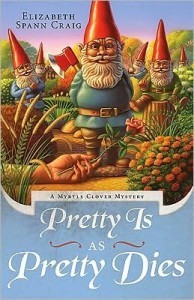
My self-published Myrtle Clover series started out as a traditional release through Midnight Ink. They published the first book in that series before deciding against a second book in the series. That’s when I got my rights back (well, the ones that I could get back), and self-published the rest.
Now I’ve got the Southern Quilting mysteries which will be dropped by Penguin after the upcoming June release of book five in the series. I’ve gotten those rights back and will be embarking on the same process soon.
These were good decisions for me and for my series. But there have definitely been some bumps in the road.
Issues I’ve run into:
Bundling. This is currently a migraine-inducing pain in the neck for me. I’ve decided to create a bundle of several Myrtle Clover titles, since I’ve got eight books in the series. Luckily, I’ve written my series so that each book functions as a standalone and with no continuing storyline. But it still sort of stinks that I’ve got to bundle what are basically books 2, 3, and 4. To get around this, I asked the designer not to even put book numbers on the box set cover. We’d just call it Myrtle Clover Bundle Volume I. It’s the best I can do. I wouldn’t attempt this with the Southern Quilting mysteries, not having the rights to books 1-5.
Continuing with a series brand without infringing on cover copyright issues. This wasn’t quite as much of a problem with my Myrtle Clover series since there was only one traditionally published book in the series. It promises to be more of an issue with the Southern Quilting mysteries since there will soon be a 5th traditionally published in that series and I’m continuing with them, as self-published books, starting in 2016.
Readers don’t understand inconsistencies within the series. They email me that Pretty is as Pretty Dies isn’t in an audio book format or that it isn’t available (why, I don’t know) in ebook format at Nook. I just briefly reply that I don’t have the rights to the book. Sometimes they complain about the print price of the title (which is now out of print). I do have the print rights converted to me now, and I probably need to get on the stick with putting it up on CreateSpace. This will likely give their digital format of the title a run for the money…considering my CreateSpace print price and their ebook price will probably be comparable.
Was There a Trad Pub Boost Originally?
Can starting out in trad-pub give your series a boost? The answer is…sometimes. I think it did for my books because my readership is a bit older and they did shop in physical bookstores for their books. I’ve had readers say that they’ve picked up my books at the drugstore or the Books-a-Million, etc. Each day I believe that more readers are trying out e-readers, though.
Whether or not you get a boost from starting a series in trad pub (or are successful in trade publishing at all) depends on a variety of factors. These include publisher marketing efforts, distribution, and the all-important cover.
One accidental benefit to my first Myrtle Clover being traditionally published is that the ebook prices for my other books in the series look like steals next to the trad-pubbed ebook price.
Looking back
I will never regret taking my Myrtle Clover series to self-pub. I’d advise other writers who have their series dropped by traditional publishers to self-publish additional books for their series, whether they have lots of readers or not. My only regret is that my Myrtle Clover series started in trad. publishing, especially since it was only the one book. It’s made things complicated, especially with the bundling/box set issue that I’m working through now.
Any other hybrid writers out there who want to weigh in?
Self-publishing a series that started out as trad-pubbed:
Click To Tweet
The post Self-Publishing a Series after Its Traditional Start appeared first on Elizabeth Spann Craig.
April 26, 2015
10 ways to tell if your book is ready for publishing
by
Sarah Juckes,
@CompletelyNovel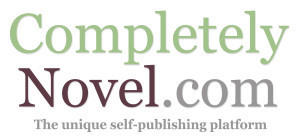
Any writer nearing the end of the writing or editing process may be all-too familiar with the worrying prospect of sending their newly-fledged work out into the big, wide world. With questions like: ‘what if it flops?’ ringing in your ears, it’s easy enough to sink into what I like to call ‘publishing-procrastination’ – where you keep tinkering with your manuscript and changing the odd word, only to then change it back again. Sound familiar? Here are ten things you can do to prove to yourself that your manuscript is 100% finished. Do these, and your book is officially ready to fly.
Check for chronological inconsistencies
It’s so easy to get dates mixed up – especially if you’re writing fiction with flashbacks or a memoir. Try plotting your events on a timeline and match the dates up with the dates you have written in the book. There are some great online timeline tools that can help, such as Office Timeline. Although it’s made for presentations, it’s pretty easy to use and will help you get a clear view of how your book works in real-time.
Do a ‘find and replace’ for character names or references
Do you reference a name with an unusual spelling, or did you change a character’s name between drafts? Doing a ‘find and replace’ in Word is a really easy way to pick out those slip-ups without having to re-read your book – again. Just press ‘ctrl+’F’ (on Windows) or cmd+’F’ (on Mac) to search and correct.
Give your book to someone else to read
Whether you’re planning to send your book to an agent or traditional publisher, or self-publish your book as an eBook or in print, you should always give it to someone else to read first. As writers, we are way too close to our work to be able to see those gaping holes. Give it to those you trust – family, friends, or a writing circle – and see what they think. Or, if you are self-publishing, send your book to a professional editor for a developmental or copy edit.
Add in some basic typesetting
Make it easy for your preliminary readers to engage with your book by separating chapters with page breaks and using a clear font. There’s more information on how to do this in Microsoft Word on CompletelyNovel, here.
Speak to your target reader
Who are you writing for? This question should always be at the front of your mind throughout the writing, publishing and marketing process. Finding out what they think of your title, your concept, your voice and even your thoughts on cover design, can be a really useful way of ensuring that your book is going to appeal to your target market and sell once it’s published.
Know that you can’t please everyone
Books are subjective. Your mum might hate it, but your dad will love it. You might find that you get really great comments about your title from most people you speak to, but one person won’t like it at all. It’s impossible to please everyone and no author should try. As long as your book makes sense and your target readers give you mainly positive feedback, you’re on to a winner.
Know what your publishing aim is
What do you want to get out of publishing your book? Do you want to sell many to lots of readers, or are you happy being well-received by a few? Are you looking to build a career around your book, or do you want to focus on writing your next one? Answering these questions are important to realising what publishing path is the right one for you. If you’d like to earn money or build a career from your book, then you might want to think about self-publishing as an option.
Think about where your book fits into the current book market
“My book is Wild meets Elizabeth is Missing.”
“My book appeals to readers of Girl on a Train.”
Comparing your book to current bestsellers is a great way to help agents understand how they might go about selling your book, or how can talk about your book with readers. Publishing is a business and knowing how your book fits into this is a really helpful exercise, whether you are looking to be a bestseller, or are targeting a niche market.
Pitch your book to a total stranger
Think your family and friends are being nice when they tell you that your book is awesome? Try pitching it to someone you don’t know. What questions do they ask? Use this feedback to nail your elevator pitch.
Be prepared to work hard
However you’re publishing, sending your book out into the wide world isn’t the end. In fact, writing is only the beginning of a life-long relationship that you’ll have with your book through book creation, publishing and marketing. Be ready to put as much into this next stage as you have with your writing and trust me, you’ll do fine.
Now, it’s time to stop tinkering let fly!
Sarah Juckes is the Communications Manager for CompletelyNovel.com. Sarah helps hundreds of authors take the plunge into self-publishing, using simple online tools to create and publish high-quality print books.
For more advice on any aspect of publishing, check out the expert advice at http://completelynovel.com/. Connect @CompletelyNovel
The post 10 ways to tell if your book is ready for publishing appeared first on Elizabeth Spann Craig.
April 25, 2015
Twitterific Writing Links
by Elizabeth S. Craig, @elizabethscraig

Twitterific writing links are fed into the Writer’s Knowledge Base search engine (developed by writer and software engineer Mike Fleming) which has over 30,000 free articles on writing related topics. It’s the search engine for writers.
7 Keys to Building Relatable Characters: http://ow.ly/LJu8t @MartinaABoone
How 7 Literary Authors Collaborated to Launch a Box Set: http://ow.ly/LJunC @Roz_Morris @Janefriedman
Review on Pronouns: http://ow.ly/LJu1D from Melissa Gilbert
Avoiding Melodrama in Your Story: http://ow.ly/LJtpD @LaurieTomlinson
Using Examples to Learn Beat Sheets: http://ow.ly/LJugM @jamigold
Query Question: ‘toss this and start over': http://ow.ly/LJtYX @Janet_Reid
3 Secrets to School Visit Success: http://ow.ly/LJtOV @kirsticall
Strengthen the Foreshadowing and Reveals: http://ow.ly/LJtti @Janice_Hardy
What Do Your Readers Know and When Do They Know It? http://ow.ly/LJucn by Dave King
7 foolproof design tips for book covers: http://ow.ly/LPgFe @creativindie
The rise of zombies as high-brow monsters: http://ow.ly/LPg8H @albomike
Creating Responsive Characters: http://ow.ly/LPfVM @CarolAnneMalone
7 Tips for Writing Captivating Description: http://ow.ly/LPgdO @mrJRPatterson @thePenleak
How to keep writing when time is scarce: 6 tips: http://ow.ly/LPgMA @Roz_Morris
Where’s the Line? On Personal Sharing in Blog Posts and Online: http://ow.ly/LPgbx @amysundberg
The Power of Our Characters’ Wounds: http://ow.ly/LPfSY @C_Herringshaw
The Truth About Memoirs: What Took You Off The Desire Line? http://ow.ly/LPg0x @AnthonyEhlers
When writing a novel, hit the ground running on page 1: http://ow.ly/LPfXJ @CalebPirtle
Punctuation Tip: How to Use ‘However’ : http://ow.ly/LPgoS @mariamurnane
Make it Sting: How to Write Betrayal: http://ow.ly/LPgit @susanjmorris
How To Write A Gothic Novel: http://ow.ly/LPg21 by Esther Kim @OmniReboot
Suggestions For Publisher-Author Partnerships from @JaneFriedman http://ow.ly/LQ23I @thewritermama
Love triangle problems: http://ow.ly/LQ5ec from the Right Writing Blog
5 World-Building Tips for Writers of All Genres: http://ow.ly/LQ4Qj @SaraL_Writer
6 Old-School Rules You Should Break as a Freelance Writer: http://ow.ly/LQ2kx @carefulcents
Rejection Doesn’t Stop: http://ow.ly/LQ2i8 @ava_jae
A chart of the shifting sea of genres: http://ow.ly/LQ1PE @popchartlab
“Bad” Writing Habits: http://ow.ly/LQ2fs @LatifahSalom
Writing characters, not symptoms: Autism: http://ow.ly/LQ5nw @JoeParlock
10 questions to ask a friend who just read your book: http://ow.ly/LQ2oJ from Mordin Writes
Confessing and confiding: elevating an essay from therapy to art: http://ow.ly/LQ4jJ by Emily Fox Gordon @theamscho
Streamline the Dialogue: http://ow.ly/LQ2cl @Janice_Hardy
How Harlequin Became the Most Famous Name in Romance: http://ow.ly/LQ4EV @passivevoiceblg @kellyfaircloth
What’s the Emotional Value of a Word? http://ow.ly/LRV2d @parisreview @DanPiepenbring
Using Passive Voice in Creative Writing: http://ow.ly/LRV9g @EimhWrite
Unlocking the Narrator’s Point of View: http://ow.ly/LRW99 by Kyla Bagnall
4 ways to avoid screenplayizing your novel: http://ow.ly/LRVDy @nathanbransford
Grappling with the Facts: Exposition: http://ow.ly/LRVrn by Deborah Turner Harris
Essentials of Character Building: http://ow.ly/LRVS5 @MichelleGriep
Do-It-Yourself-MBA for Writers: Insight for the Business Side of Writing: http://ow.ly/LJuvM @carolchiao
8 Ways Writers Can Be More Reader-Friendly: http://ow.ly/LJtvM @JodyHedlund
Trying to free up more writing time? 10 commandments of NO: http://ow.ly/LJtzV @jaltucher
Getting It Right: Writing About Post-Traumatic Stress Disorder: http://ow.ly/LFoAu @writerology
5 Reader-Hooking Features Every Author Website Needs: http://ow.ly/LFo7W @ChristelleWrite @shewrites
Kindle Cover Disasters: http://ow.ly/LFmLa
A TED speaker coach shares 11 tips for right before you go on stage: http://ow.ly/LFnTJ @tedtalks
Top 5 Ways Authors Can Use Instagram: http://ow.ly/LFofC @janaylampkin
5 Reasons to Write a Book Series: http://ow.ly/LFo4T @ShelleySturgeon
Author Optimization 101: Changing Covers: http://ow.ly/LY53L @SeanPlatt
Why great novels don’t get noticed now: http://ow.ly/LFmT6 @woodgaby @passivevoiceblg
Special Needs in Strange Worlds: Disabilities in Genre Panel from LTUE (audio) http://ow.ly/LFpdu by Sarah Chorn @sfsignal
London Book Fair: Authors, #IndieReCon And ALLi’s 3rd Anniversary: http://ow.ly/LXvDf @Porter_Anderson @OrnaRoss
3 Keys to #writing Memoir with @LucindaSMcDowell: http://ow.ly/LFpzK @ediemelson
5 tricks to bringing emotion to life in your books: http://ow.ly/LFmGo @WriterDiaries @vleighwrites
When Selling Books, Don’t Forget to Finish Your Swing: http://ow.ly/LFmBD @PaulaMargulies
‘Stealing” Writing Time’ and Revisiting Your Goals: http://ow.ly/LFoiu @kayedacus
‘Women, give science fiction a chance’ : http://ow.ly/LD9DZ @JustinaRobson
Author Feuds: Infographic: http://ow.ly/LD9xk @galleycat
Different Ways to Brand Book Covers for Series: http://ow.ly/LW6BM @adrijusg
Meaningful Connections: The Semicolon: http://ow.ly/LD91d @JLeaLopez @WriteAngleBlog
6 Famous Authors Who Have Written Fanfiction: http://ow.ly/LD95w @passivevoiceblg @emma_a_whitford
Top 10 Elements of a Book People Want to Read: http://ow.ly/LDaUg @withpenandpaper @writersdigest
The Importance of Routines: http://ow.ly/LD9Hz @kristinerusch
How Important is Originality? http://ow.ly/LDaRx @ava_jae
How to Create a Character Arc from Plot : http://ow.ly/LD9LG @HeatherJacksonW
4 Reasons to Buy a Standup Desk: http://ow.ly/LDaMQ @michaelhyatt
Scrivener: The Ultimate Guide to Exporting Ebooks (Kindle, ePub, etc.): http://ow.ly/LD8OI @NickThacker
How to Promote A Book: 3 Steps: http://ow.ly/LDb4q @JBennett111 @nickthacker
Organization In Writing – Drafts: http://ow.ly/LD9lJ @rsmollisonread
Clean Up the Description and Stage Direction: http://ow.ly/LAmz8 @Janice_Hardy
A Double Negative Is Not Always UnOK: http://ow.ly/LAmoy @writing_tips
How to Prioritize Your Creative Calling: http://ow.ly/LAn92 @ArtistThink
Aim for brevity, precision, and clarity in writing: http://ow.ly/LAmYI @shalvatzis
Making Your Own Inspiration: A Writer’s Guide: http://ow.ly/LAmFB @AnneGreenawalt
89+ Book Marketing Ideas: http://ow.ly/LAmWa @authormedia
6 Suggestions for Serious Serialists: http://ow.ly/LAmhf @BeckySDoughty
Use Pinterest to Communicate with Your Cover Designer: http://ow.ly/LR7wA @hanasu
Why are all writers paranoid? http://ow.ly/LAnkB @CalebPirtle
Gray Areas: Sponsorship At Writers’ Conferences: http://ow.ly/LQ6K2 @Porter_Anderson
Words to Describe Hair in POC: http://ow.ly/LAmKD by Writing With Color
How to Update an Amazon Widget: http://ow.ly/LAmSs @authormedia
10 Issues When Self-Publishing A Children’s eBook: http://ow.ly/LAmtw @selfpubreview
2 days of writer’s block unlocked a character’s secret: http://ow.ly/LAm88 @Roz_Morris
Boxes of writing ideas: The Storymatic and Rory’s Story Cubes: http://ow.ly/Lxurm @robotech_master
Smashwords and why it’s helpful for writers: http://ow.ly/LPhpB @suspense_writer @KingsRiverLife
5 Tips on Editing Another Writer’s Work: http://ow.ly/LPgwL @BenJLancaster @thePenleak
10 Reasons for Authors to Blog: http://ow.ly/Lxub3 @robinhoughton @annerallen
Book Titles That Sell, Productivity For Authors And Marketing For Introverts: http://ow.ly/LxC6s @thecreativepenn @timgrahl
How to turn a Complex Story into a Simple Synopsis: http://ow.ly/LxtJi @DrewChial
Writing with Color: Tips for Writing a Black Woman + White Man Friendship to Romance http://ow.ly/LxBN3
Top writing links for the week at Twitterific:
Click To Tweet
The post Twitterific Writing Links appeared first on Elizabeth Spann Craig.
April 23, 2015
Keywords for Visibility
By Elizabeth S. Craig, @elizabethscraig
There’s an adage that states potential customers must see a marketing message seven times before deciding to purchase a product.
I’m someone who has to hear about a promo technique seven times before finally deciding to experiment with it.
Except in the case of Amazon keywords. I’ve read likely a couple of dozen blog posts on Amazon keywords. Only now have I finally scraped up enough time to work on it.
Amazon, of course, is a search engine. There’s metadata involved, there’s SEO involved. We need to make our books visible to potential readers.
When I originally chose my keywords, I went with terms I thought readers may be looking for. My keywords were like this: mystery, cozy mystery, women sleuths, etc.
And sure, readers are looking for these terms. The only problem is that there was absolutely nothing unique about them. I wasn’t giving the books a boost with these keyword choices. My books are already listed in the mystery and cozy categories, so I’m basically wasting these keywords. I’m hardly the only author putting mystery down as a keyword. Thousands of other writers are doing the same thing.
What I wanted to do was to narrow the field and actually make my books show up on pages that cozy readers are searching for. I took my old keywords and started plugging them into the Amazon search bar to see what came up for results. (This technique is mentioned by Joanna Penn , Penny Sansevieri , and the folks at Standout Books, among others.)
For instance, I typed cozy mystery into the search bar and then went through the alphabet. Cozy mystery a (and viewed what, if anything, came up with the auto-complete). Then cozy mystery b…and so on. I discovered, and this shouldn’t be a huge surprise, that apparently quite a few cozy mystery readers were searching for cozy mysteries with cats. A look at the books on that page showed that many of the books were ranked highly on Amazon, which means they were selling, obviously.
And I thought: well, heck, I have a cat in my Myrtle Clover mysteries. Pasha is a feral cat who occasionally obtains sidekick status during Myrtle’s exploits. She’s not soft or cuddly or cute. But she’s a feline! And my titles weren’t showing up for that search.
I looked at the page and sure enough, plenty of the cozy mysteries on that Amazon page appeared to be doing well.
I logged onto my KDP dashboard, changed keywords for various titles to cozy mysteries with cats and hit publish.
As I’m writing this post, I see that I have a title listed on the second search page, two on the fourth, and one on the fifth.
So, although cozy mysteries is now becoming more crowded field, I’m standing out in a narrow field with a refined search. I’m more visible.
What’s more, I’ve seen an increase in sales resulting from this technique.
Another popular search was cozy mysteries kindle free. So I applied that to my permafree title. Another was cozy mystery new releases. So that keyword went onto the book that came out early this month.
We can change keywords at any time. If we don’t see good results, we can revisit what we’re doing. Obviously, the best way to sell books is to have a professional product: nice cover, good cover copy, plenty of (fair) reviews, and more titles than fewer. But if something as small as tweaking metadata can help…and this didn’t take me but a few minutes…then I’m all for it.
I’ve also seen popular keywords added as subtitles to both fiction and nonfiction books.
A word of caution that we definitely don’t want to keyword stuff (adding our keywords to our title, subtitle, and book description to an excessive degree…where it appears very forced) or else that could potentially lead to Amazon wanting to pull the title. We wouldn’t want to violate their Terms of Service.
How did you choose your keywords? Have you ever done a keyword search on Amazon?
Use smarter keywords for visibility on Amazon:
Click To Tweet
The post Keywords for Visibility appeared first on Elizabeth Spann Craig.
April 19, 2015
How to Use Pinterest to Communicate with Your Cover Designer
by Hanna Sandvig, @hanasu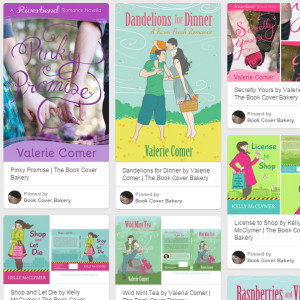
I’m a big Pinterest user, and as a cover artist nothing makes me more happy than an author who also uses Pinterest. Cover designers are, by our nature, very visual and Pinterest is a purely visual way of conveying ideas, making it the perfect way to work with your cover designer. Designers often don’t have time to read your book before working on the cover (and often the book is still being written when I get started!) so communicating your story through images gives us a way to read your mind, which is a pretty handy trick. Here are a few ways you can use Pinterest to communicate with your cover designer:
Make a board to communicate details about your story and characters
Do you have a specific celebrity or a photo in mind when you create the look of your characters? Pin your reference photos with a description that includes the characters name, and maybe what it is about the photo that reminds you of the character. Sometimes it’s not just one photo, but the hair from one, the tattoo from another, you get the idea. Pin them all! I’ve seen boards with thirty images (photos, artwork, movie stills) about one character. By looking at all those inspirations I can get a really clear idea of who the character is.
Characters are the most central part of your story, but you can also pin images of clothes, the setting, any details that are important.
Make a board that conveys the mood of your book
This is usually a board that you’ve created to provide inspiration while writing your book. Especially in fantasy/sci-fi stories and historical fiction, I see a lot of boards that include all sorts of inspirations. I love to see artwork and movie stills in boards like this. Emotional photography, images that tell a story. When you combine all those images together, I can get a great sense of the books tone. Is it dreamy? Dark? Whimsical? Gritty? Romantic? You can tell me what the mood of your story is, but if I see your inspirations I can really feel it with you. Nailing the mood for your cover is the best way to attract the readers who will truly love your book.
Pin book covers that you really love
 Create a board for book covers, and whenever you come across one that inspires you, pin it with a note saying, specifically, what you like about it. So you might pin a cover and make a note in the description that you love the font, or the layout, or the photo. The more covers you pin, the better sense your designer will be able to get of your taste. Don’t just pin one or two and expect them to copy the elements you like, you want a cover that suits your story and genre without being a rip-off of someone else’s work.
Create a board for book covers, and whenever you come across one that inspires you, pin it with a note saying, specifically, what you like about it. So you might pin a cover and make a note in the description that you love the font, or the layout, or the photo. The more covers you pin, the better sense your designer will be able to get of your taste. Don’t just pin one or two and expect them to copy the elements you like, you want a cover that suits your story and genre without being a rip-off of someone else’s work.
Try to stick to covers that are in your genre. Readers can spot a book they will love by the way a book looks, so you don’t want to pull too much inspiration from covers outside your niche, no matter how pretty they are. A good cover designer will research and understand the market, but you should always be an expert in what’s selling well in your genre.
Create a shared board with your designer
If your designer uses Pinterest, you can create a board for the cover project and add them as a pinner using the little “invite” button in the board’s header. This allows you both to pin images and collaborate visually. You can share covers you like, stock photos you think could work, or different font choices. If you don’t want the world to see the cover design process, just set the board to “private” when you create it. Anyone you invite to a private board will be able to see it and pin on it with you. Shared boards are a fantastic way to swap ideas about the cover and keep each other in the loop as you’re working.
I believe that the best covers are created by the designer and the author working as a team. The author has the knowledge of the story and the market, and the designer knows the artistic side of it. The better your communication with each other, the better the result. So learn your designers language and work with us as visually as you can!
Do you have any questions about using Pinterest or collaborating well with a cover artist? Let me know in the comments!
Use Pinterest to communicate with your cover designer (via @hanasu):
Click To Tweet
 Hanna Sandvig is the cover artist behind The Book Cover Bakery. She specializes in covers for Romance, Cozy Mystery and Chick-Lit novels featuring custom illustrations, original photography, and hand lettering. She is passionate about helping indie authors connect with the readers who are waiting to hear their stories.
Hanna Sandvig is the cover artist behind The Book Cover Bakery. She specializes in covers for Romance, Cozy Mystery and Chick-Lit novels featuring custom illustrations, original photography, and hand lettering. She is passionate about helping indie authors connect with the readers who are waiting to hear their stories.
Hanna lives in the mountains of BC, Canada, with her husband and two little girls.
The post How to Use Pinterest to Communicate with Your Cover Designer appeared first on Elizabeth Spann Craig.
April 18, 2015
Twitterific Writing Links
by Elizabeth S. Craig, @elizabethscraig

Twitterific writing links are fed into the Writer’s Knowledge Base search engine (developed by writer and software engineer Mike Fleming) which has over 30,000 free articles on writing related topics. It’s the search engine for writers.
50 Questions to Ask Yourself About Your Author Platform: http://ow.ly/LnY7I @amcbooks
Writing Tip: Dialogue: http://ow.ly/Lo0JY @lindasclare
The Ups and Downs of Indie Life: http://ow.ly/LnYUj @Nicholas_Rossis
5 Things 1 writer learned from Fifty Shades of Grey: http://ow.ly/Lo0GP @s_lovett
Promo basics: http://ow.ly/Lo1gp @niniehammon
Speaking out on issues as an author: http://ow.ly/LqRwC @mikemartinez72
15+ Tactics for Writing Humor: http://ow.ly/LqP9E @SeptCFawkes
10 things 1 writer learned while writing his last book: http://ow.ly/LqR0d @austinkleon
Expand, Deepen, and Create Motion–3 Tweaks that Keep Details Interesting: http://ow.ly/LqPIj @SeptCFawkes
Writing a story from the villain’s POV: http://ow.ly/LqRgQ @EimhWrite
4 Writing Processes: What Is Your Red-Zone? http://ow.ly/LqQyf @RogerDColby
Crime Writers: How To Properly Rot Your Corpses: Postmortem Decomposition: http://ow.ly/LqQIO @LeeLofland
Writing Oneself Back to Life: http://ow.ly/LqOPB by Jamie Luce @_TheChangeBlog
The Complete Guide to Italicization: http://ow.ly/LqP1Q @epbure
How to Write What’s Not Written (Subtext): http://ow.ly/LqPkq @SeptCFawkes
Structure for building your novel: http://ow.ly/LqRaR @YAtopia_blog
6 Ways to Sell Books: http://ow.ly/LqQWa @tobywneal
5 Ways to Balance Freelance Writing Jobs and Personal Projects: http://ow.ly/LvLIO @charityscraig
How to Build Your Platform and Sell More Books with Podcasting: http://ow.ly/LvLKq @juicetom
Find your writing voice: http://ow.ly/LvM6z by Meredith Quinn @TheWriterMag
Manuscript Pitch Websites: Do Literary Agents Use Them? http://ow.ly/LvM3g @victoriastrauss
The Query Process: laughably bad rejections: http://ow.ly/LvLZ4 @JaneLebak
Online Writer Resources Roundup: http://ow.ly/LvLNu @ava_jae
Eliminate Unnecessary Infodumps: http://ow.ly/LvLGX @Janice_Hardy
What to Put On Your Author Website: http://ow.ly/LvLRU @LEEandLOW
Tips for describing a main character: http://ow.ly/LvLDv @glencstrathy
When books don’t live up to their names: http://ow.ly/LvLUX by Moira Redmond
How to Polish Your Writer Brand: http://ow.ly/LvM24 @NicoleLautore
Difference Between Novels and Tales: http://ow.ly/LvM0L @noveleditor
13 Picture Books Celebrating the Lives of Great Artists, Writers, and Scientists: http://ow.ly/LxtYC @brainpicker
When Writing Comes Easy, Don’t Make These Mistakes: http://ow.ly/LxtbC @vgrefer
Screenwriters: On Writing “Rules”: 8 Things to Remember: http://ow.ly/Lxtht @bang2write
We’re all genre readers now: http://ow.ly/LxBFL @passivevoiceblg @magiciansbook
Giving Readers Surprises and Revelations: http://ow.ly/LxtrO @davidfarland
The 50 Best Genre-Bending Books: http://ow.ly/LxsRn @emilypekar
10 Things That Make a Book Un-Put-Downable: http://ow.ly/LnYiU @JohnnyBTruant
4 Tips for the Aspiring Professional Writer: http://ow.ly/Lo0Ye @the_squishyness
Pursuing a Trad Published Dream: http://ow.ly/LnZjG @SueColetta1
Need – The Protagonist Wants Something: http://ow.ly/Lo0N9 @woodwardkaren
How To Make An Author Video: http://ow.ly/Lo0wB @BenMWallace @mollygreene
Talking about setting: Time: http://ow.ly/Lo0Bl @nownovel
Your Brand Needs a Visual Style Guide: Here’s How to Create One: http://ow.ly/LnYvd @canva
At London Book Fair, talking Frankfurt Book Fair: http://ow.ly/LFtKc @Porter_Anderson @TheFutureBook
How 1 writer improved her writing productivity by 100%: http://ow.ly/LnWkF @novelexperienc3
4 Mistakes When Naming Characters: http://ow.ly/LnUrd from Ima Work in Progress
The Difference Between “Flawed” Characters and “Too Dumb to Live”: http://ow.ly/LnVTm @kristenlambtx
How the Rule of 3 Can Help Writers Avoid Backstory Slumps: http://ow.ly/LnU4T @lindasclare
Creating to-do lists that incorporate mind, heart, and body: http://ow.ly/LnSXL @mlvwrites
3 Essential Editing Tips For Writers: http://ow.ly/LnT6J @DonnaRadley
How Mirror Characters Can Illustrate Literary Themes: http://ow.ly/LnUcV @SaraL_Writer @DIYMFA
The importance of change in a setting: http://ow.ly/LnUgC @nathanbransford
The Terror and Wonder of Watching Your Book Get Made Into a Movie: http://ow.ly/LnVKW @TheDanWells
1st pass editing–16 questions to ask yourself: http://ow.ly/LnVZv @KLGoing
Help for Women Writers Seeking to Bridge “The Confidence Gap”: http://ow.ly/LnTVh @themegduffy
Tips for plot time jumps and getting bogged down: http://ow.ly/LDc3w @deanwesleysmith
Series? Stand Alone Books? What Should You Write? http://ow.ly/LDltE @JulieMusil @AlexJCavanaugh
Tools for Novel Writers: The Editing Checklist: http://ow.ly/LnWa4 @coolcarsoncraig
A closer look at the ebook subscription model: http://ow.ly/LwL5V #FutureChat recap @Porter_Anderson
Writing A Book According To Pinterest: http://ow.ly/Lmvci @larin20
How To Create The Perfect Plus Sized Heroine: http://ow.ly/Lmvtu @DarlaGDenton
3 Simple Steps for Creating Engagement on LinkedIn: http://ow.ly/Lmwbs @mktgcopywriter
Having Too Many Ideas: Solutions: http://ow.ly/LmvBR @jonathanballcom
3 Reasons Twitter and Writers are a Perfect Match: http://ow.ly/Lmw2V @EdieMelson
Create a Call to Action for Your Blog: http://ow.ly/LmvZG @BlotsandPlots
How to take an author photo: http://ow.ly/LBuD7 @Pages2Type
Keys to Discoverability: http://ow.ly/LBrGf @kristinerusch @SteveCampbellFL (podcast)
Tired Of Doing It All? A Virtual Assistant Can Help: http://ow.ly/LBm6d @artconnectsus @thecreativepenn
How Not to Get Overwhelmed with Revisions: http://ow.ly/Lmw6H @ava_jae
Protagonists: Making vs. Following Fate: http://ow.ly/LmvH4 @Kid_Lit
Pop-culture and obscure references in fiction: http://ow.ly/LmvjC @RobertJSawyer
Infographic: 50 of the World’s Most Translated Books: http://ow.ly/Lmvfg @InkBitsPixels
A series on scenes: http://ow.ly/LmvPu @kayedacus
Make Your Novel Salable in 7 Steps: http://ow.ly/Lmvw2 @DeniseDrespling @WriteAngleBlog
Help with Facing Writing Fears: http://ow.ly/Lm9mG @ingridsundberg
Writing Nonfiction Ebooks: Easy Ideas: http://ow.ly/Lm92b @angee
7 Ways to Make Facebook Worth Your Time: http://ow.ly/Lm9KQ @amcbooks
Flesh Out Character Development: http://ow.ly/Lm9Co @Janice_Hardy
Adjusting to Expectations After Publishing Your 1st Novel: http://ow.ly/LyNMy @bryonq
7 Visual Ideas to Increase Your Social Engagement: http://ow.ly/Lm8pn @marcushokh
Indies Hitting The Big Time: Jasinda And Jack Wilder At Berkley Books: http://ow.ly/LwJId @Porter_Anderson @JasindaWilder
How to Build a Compelling Novel Concept: http://ow.ly/Lm8Hs @CSLakin
11 Writers on Writing Inspiration: http://ow.ly/LwD4D @nownovel
6 Simple Ways To Handle Viewpoint Changes: http://ow.ly/Lm9W7 @writers_write
Do clichés have any place in writing? http://ow.ly/LwDiu @silas_payton
5 Questions to Ask Yourself Before Starting an Author Podcast: http://ow.ly/Lma5y @amcbooks
Publishing For Digital Minds Conference Opens London Book Fair Today: http://ow.ly/LwJQT @Porter_Anderson
Political movements in crime fiction: http://ow.ly/LwJsL @mkinberg
3 Mistakes Nonfiction Writers Make and How to Fix Them: http://ow.ly/Lm9gb @ninaamir
Book Bloggers: Where to Find Them and How to Win Them Over: http://ow.ly/Lm9x8 @BlotsandPlots
Finding Media Outlets and the Pitch: http://ow.ly/Lm8D3 @SpunkOnAStick
Building characters with hard-boiled dialogue: http://ow.ly/Lm9cz @Jake_Lassiter
3 Insights Into Writing about Social Issues: http://ow.ly/LdMYe @LisaPBennett
How To Write A Memoir: http://ow.ly/LdNaE @berkun
Writing Devices: Pros and Cons of Connectivity: http://ow.ly/LdMAF @JAZarins
Self-Editing for Point of View: http://ow.ly/LdMFP by Rachel E. Newman
7 Crucial Logline Mistakes and How to Fix Them: http://ow.ly/LdNf9 @therealtimothy @scriptmag
What Fresh Hell Is This? On rewriting your novel: http://ow.ly/LdN65 @ChristaDesir
The post Twitterific Writing Links appeared first on Elizabeth Spann Craig.




